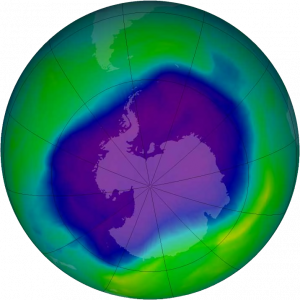In a noble step, moving from CFCs to HFCs, the Republic of India ratified the Kigali Amendment under the 1989 Montreal protocol. This was a follow-up of the decisions by the United States of America and the People’s Republic of China in the past few months on the Kigali Amendment.
FROM CFCS TO HFCS | MONTREAL PROTOCOL
The 1989 Montreal Protocol is not a climate agreement. But, it is aimed at protecting the earth from ozone-destroying chemicals like chlorofluorocarbons (CFCs) that were earlier used in the air-conditioning and refrigerant industry. Consequently, these very CFCs had caused a hole in the Ozone layer of the atmosphere leading to the incidence of numerous chronic diseases.

Read more about the Montreal Protocol here.
WHAT IS THIS AMENDMENT? | FROM CFCS TO HFCS: INDIA RATIFIES KIGALI AMENDMENT
The Kigali Amendment gets its name from the Rwandan capital. Negotiation of the amendment focuses on enabling the phase-out of hydrofluorocarbons (HFCs), a set of chemicals notorious for their capacity to warm the planet.
Above all, these gases are a hundred times more potent than carbon dioxide in their ability to cause global warming. The Montreal Protocol aims to phase out ozone-destroying chemicals only. But, the Kigali Amendment enabled the Montreal Protocol to mandate the elimination of HFCs as well. Above all, it is estimated that a complete phase-out of HFCs by 2050 would prevent about 0.5 degrees Celsius rise in global temperatures by the end of this century.

Therefore, this important instrument will achieve the target of restraining the increase in global temperatures to 2°C from pre-industrial times.
TARGET | FROM CFCS TO HFCS: INDIA RATIFIES KIGALI AMENDMENT
The United States, China, and India are in a separate group of countries. Importantly, each of these groups has different time schedules to phase out their HFCs. Above all, they need to replace them with climate-friendly alternatives.
India has to reduce its HFC use by 80 per cent by the year 2047. While China has to achieve the same target by 2045, the United States has to achieve it by 2034 respectively.
Read here | Afghan Women: Past, Present, and Future
